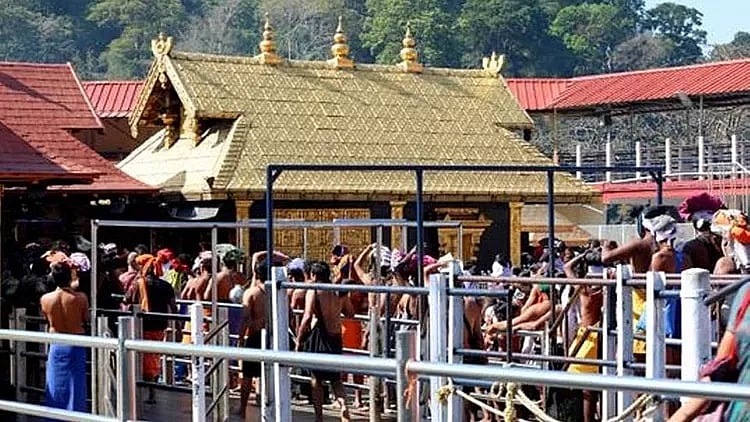The Supreme Court’s 1,045-page-long judgement handing over the disputed land where the Babri Masjid once stood to the plaintiffs associated with the Vishwa Hindu Parishad is built on a claim that the Muslims failed to adduce documentary evidence that namaz was offered in the mosque from the time of its construction in 1528 until 1857, when it enters the annals of colonial law thanks to a riot in Ayodhya.
Hence, the main beneficiaries of the Supreme Court judgement on Ayodhya are those who planned and perpetrated the heinous violence on December 6th 1992 which led to the destruction of property and thousands of innocent lives throughout India. By recognizing the preponderance of faith of billions of Hindus over Constitutional morality, the message conveyed is that religious fervour of over one billion Hindus overrides minority rights. That is perhaps why compensation of a larger plot to the Muslims would serve to assuage their feelings.

Also, the five-judge Constitution bench has assumed that by handing over a five-acre plot of land to the Muslims for construction of a mosque within Ayodhya itself would compensate the Muslims for the destruction of the Babri Masjid – never mind the flagrant violation of law and the mass killings of innocent citizens by inflamed zealots. After all, there was some evidence of Hindus worshipping at the disputed site, while the Muslims failed to prove this.
Hence by the “balance of probabilities” the five-judge Constitution bench of whom one judge is a devout Muslim, gave the land to the Hindu side. It is readily apparent that this logic could also be applied to other mosques which the Hindutva organisations claim. Once the Ayodhya temple has been milked of all political mileage, the Sangh will up the ante elsewhere.
The Ayodhya dispute is not merely a civil dispute over property between litigants on a level playing field but a naked power play of religion mixed with politics in which the judiciary has been dragged in. Neither the political agenda of the Rashtriya Swayamsevak Sangh nor those of the Uttar Pradesh or the Central governments were ever doubted. However, the Supreme Court is supposed to uphold Constitutional values and probity and not faith alone.
Paragraphs 786, 797 and 798 contain the kernel of the judgment:
“786. Though, the case of the [Muslim] plaintiffs…is that the mosque was constructed in 1528 by or at the behest of Babur, there is no account by them of possession, use or offer of namaz in the mosque between the date of construction and 1856-7. For a period of over 325 years which elapsed since the date of the construction of the mosque until the setting up of a grill-brick wall by the British, the Muslims have not adduced evidence to establish the exercise of possessory control over the disputed site. Nor is there any account in the evidence of the offering of namaz in the mosque, over this period…
797. On the balance of probabilities, there is clear evidence to indicate that the worship by the Hindus in the outer courtyard continued unimpeded in spite of the setting up of a grill-brick wall in 1857. Their possession of the outer courtyard stands established together with the incidents attaching to their control over it.
798. As regards the inner courtyard, there is evidence on a preponderance of probabilities to establish worship by the Hindus prior to the annexation of Oudh by the British in 1857. The Muslims have offered no evidence to indicate that they were in exclusive possession of the inner structure prior to 1857 since the date of the construction in the sixteenth century. After the setting up of the grill-brick wall, the structure of the mosque continued to exist and there is evidence to indicate that namaz was offered within its precincts.”
“The exclusion of the Muslims from worship and possession took place on the intervening night between 22/23 December 1949 when the mosque was desecrated by the installation of Hindu idols. The ouster of the Muslims on that occasion was not through any lawful authority but through an act which was calculated to deprive them of their place of worship.
After the proceedings under Section 145 of CrPC 1898 were initiated and a receiver was appointed following the attachment of the inner courtyard, worship of the Hindu idols was permitted. During the pendency of the suits, the entire structure of the mosque was brought down in a calculated act of destroying a place of public worship. The Muslims have been wrongly deprived of a mosque which had been constructed well over 450 years ago.”
Hence, there can be no doubt that the five-judge bench of the Supreme Court has admitted the wrong committed to the Muslims but compensates them with a five acre plot while boosting the saffron brigade’s contentions. The judges admitted they got possession by breaking the law but did not mention the alleged connivance of the late Prime Minister P V Narasimha Rao whose tacit acquiescence led to the destruction of the Babri Masjid and subsequent riots.
Now, the disputed land will be owned by the Central government and transferred to a board of trustees of a trust to be set up to build a temple. The Supreme Court ordered the entire disputed 2.77 acres to be allocated for the construction of a temple while setting aside the 2010 judgment of the Allahabad High Court as incorrect. Thankfully, the five judges ruled that the razing of the Babri Masjid and its 1949 desecration flouted the law.
Now, we wait with bated breath for the pronouncement on review petition of the Sabarimala temple. Will faith override reason again?
The writer holds a Ph.D in Media law and is a journalist-cum-lawyer of the Bombay High Court.







